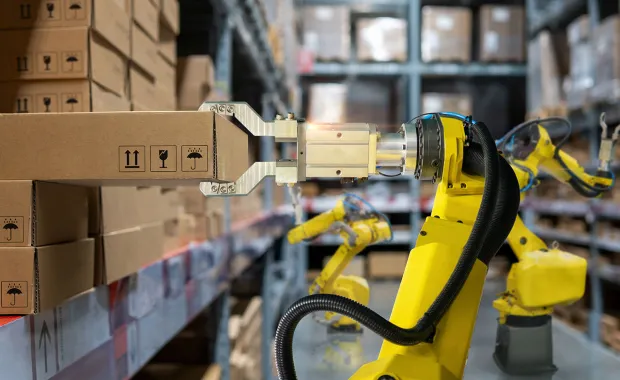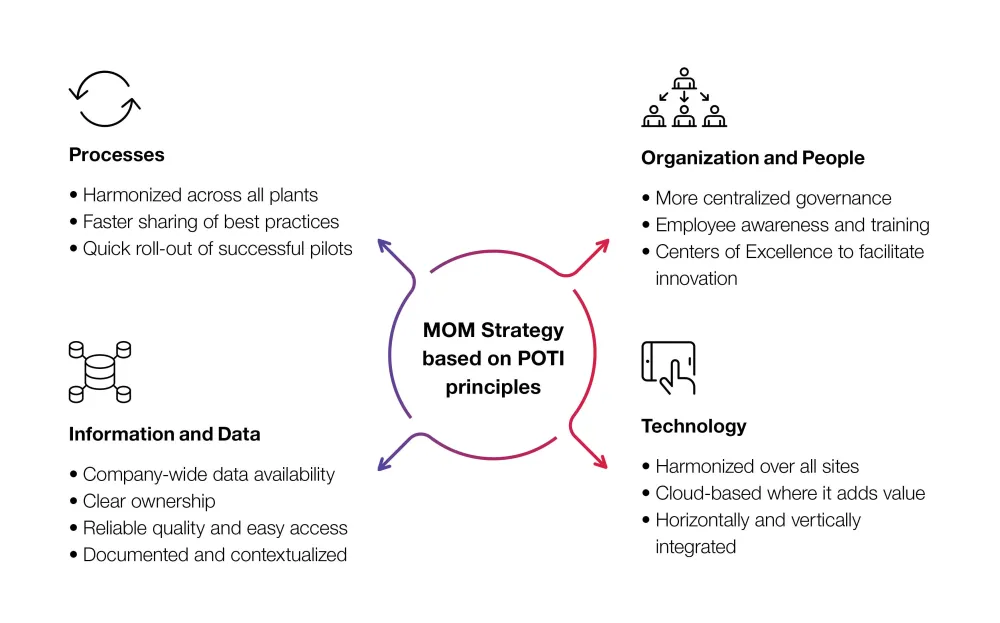Manufacturing plants are complex and fast-paced environments. Many clients I speak with are looking to innovate and digitally transform their manufacturing operations to create best-in-class production facilities. And rightly so. The market, and the industry as a whole, are at an inflection point. If you don’t spend time, energy and investment to realize the full benefits of technology, you risk falling behind and likely never catching up.
The 2021 CGI Voice of Our Clients reveals that a common attribute among manufacturing digital leaders (those producing expected results from their digital strategies) is that they are better at introducing applicable innovation. Manufacturers have to start pursuing strategic technology investments to deliver on their business objectives in the coming years. Whether those objectives are around streamlining processes and increasing efficiency across the plant, positioning themselves as a company with societal purpose or reimagining their business to lead the direction of their industry—technology and data will play a significant role.
CGI’s Digital Factory vision is based on this premise. In our vision, we discuss the building blocks of the future of smart factories: IoT and connectivity, the role of automation, the need for IT and OT alignment, the invaluable value of data, and an intelligent and secure move to the cloud. The future is full of possibilities; however, what matters is how well we transform these possibilities into reality. This is where a majority of manufacturing organizations struggle.
Lack of digital leadership and talent impedes progress
Technology offers countless opportunities, but it will provide no real long-term value without clearly identifying the “why” of using it. Moreover, many proofs of concept have been built to try out new technologies, but few have been industrialized. Therefore, it isn’t surprising that only 15% of manufacturing executives say they are producing expected results from digital strategies.
Unlike the banking industry, digital transformation is still in its infancy in manufacturing. Many manufacturers are still in the exploratory phase. What’s more, the industry as a whole is lagging behind in employing “digital” talent. In fact, just a handful of organizations have a transformation specialist to lead their digital initiatives, and manufacturing digital leaders cite “lack of talent” as their number one constraint to achieving their business priorities.
Connecting the dots to overcome the hype and accelerate innovation
In addition to a talent shortage, innovation in the manufacturing industry is often confined to a discrete technology mindset: “I’d like to do something with digital twins,” or “I think we would benefit from machine learning.” My suggestion is to take a step back and first clearly identify your mission and goals. Doing so will help you align and design your transformation roadmap with the business objectives and strategy in mind and develop an action plan to deliver concrete outcomes. From this exercise, feasible growth pathways will emerge to advance your transformation.
Four considerations for excelling at Manufacturing Operations Management (MOM)
Such an approach must take into consideration four core areas:
- Processes
- People and organization
- Data and information
- Technology
At CGI, our Manufacturing Atlas framework helps organizations consider all four areas to holistically optimize and transform their manufacturing operations, supply chain and supporting information systems through well-thought-out modifications and effective implementation. Expected and realized benefits are central to every step. Through this integrated approach, we help manufacturers manage “choice overwhelm” by designing feasible growth pathways. We do this by working together to effectively identify, master and execute technologies that solve their problems and drive long-term profitable growth.
Asking the tough questions
Taking steps to evolve your manufacturing processes and operations in a unified way is exciting; knowing where to start can be overwhelming and is not without challenges. When consulting with clients, I encourage them to ask and answer some tough questions, including:
- Are all parts of the business on board and involved in the strategy?
- Does my strategy consider all the processes?
- What data am I including? How am I sourcing this data and making sense of it?
- What technology will I need to achieve my business objectives now and in the future?
- What knowledge and capabilities do I have access to, and what is missing?
- Is my organization at the right maturity level in all four areas?
Answering these questions enables manufacturers to think about their digital initiatives in a more effective way. It also ensures all voices within the organization are heard. This step is critical to success. Without organization-wide buy-in, transformation becomes just another “corporate” initiative that can widen the boardroom-shop floor divide. By integrating shop-floor knowledge from people and machines, greater and more inclusive results can be achieved. This is particularly relevant against the backdrop of the industry’s rapidly aging workforce.
Including all areas of the business also helps to reduce hesitancy in moving forward with digital initiatives. Too often, and especially within manufacturing, traditional culture hinders change. There may be well-founded concerns with shifting production to the cloud or “opening up” the business for fear of new technologies introducing new security risks. Yet, a structured framework can address these concerns and resolve them in a measured and safe way to support a successful transformation.
Your digital transformation approach and strategy are unique to your organization. Whether you are facing “choice overwhelm,” aren’t sure how to incorporate technology innovation into your strategy or are hesitant to take the next (or first) step in your transformation journey, having a proven methodology and framework can help you make sense of what is needed and why, so you can reinvent your manufacturing operations for excellence.
Get in touch with me to learn more about our Manufacturing Atlas framework.








